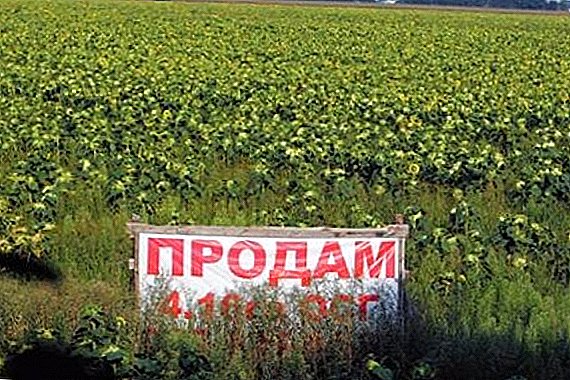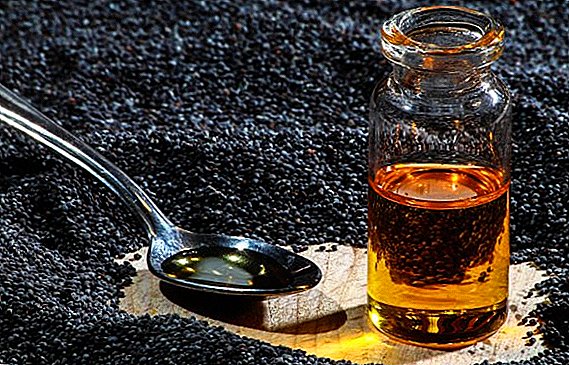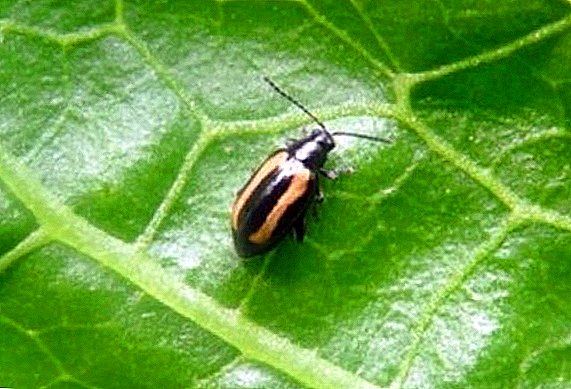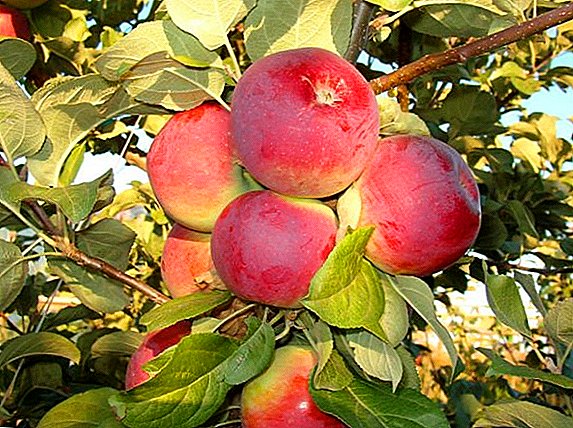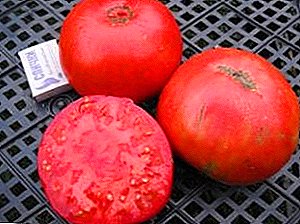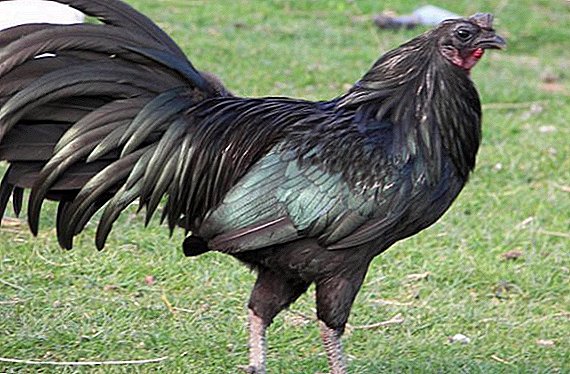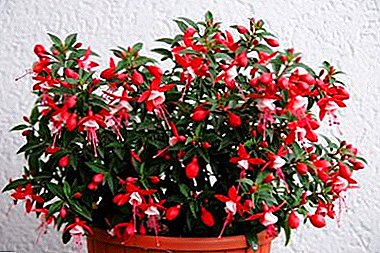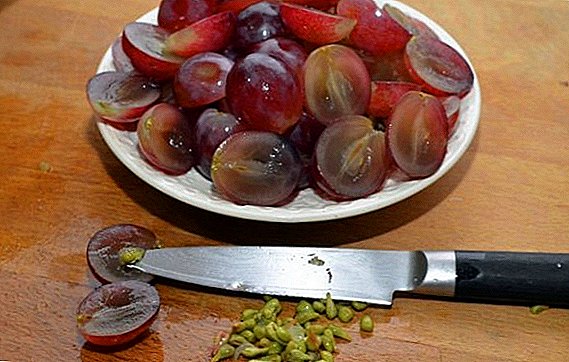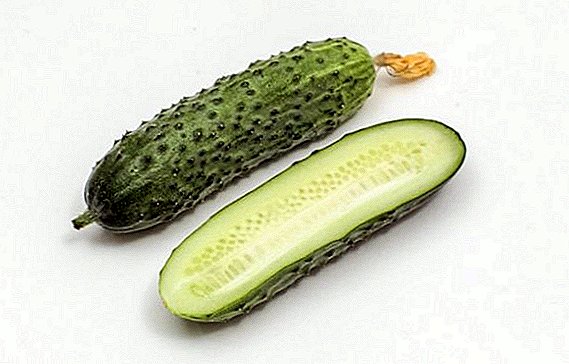 Constantly new vegetables appear on our table, but one of the oldest "customers" is a cucumber. Today there are a lot of different varieties. Among them are early, middle, late, hybrid and pollinated plants. In this article we will talk about the early hybrid "Paratunka F1".
Constantly new vegetables appear on our table, but one of the oldest "customers" is a cucumber. Today there are a lot of different varieties. Among them are early, middle, late, hybrid and pollinated plants. In this article we will talk about the early hybrid "Paratunka F1".
Variety description
This variety does not require bee pollination. Initially, it was intended for cultivation in greenhouses. But later it turned out that he gives good results in open ground.
Check out the best varieties of self-pollinated cucumbers.
The length of the central whip reaches 2 meters. Shrub medium branching. Female flowers give one hundred percent ovary, located in bunches. 3-5 greenmen grow from one knot.
Paratunka has such advantages:
- early fruit ripening;
- self-pollination capacity;
- high yield;
- the presence of beam ovaries;
- universality of the use of fruits;
- resistance to cooling;
- female type of flowering;
- resistance to diseases.
 But the ideality of this sort of spoil some of the shortcomings:
But the ideality of this sort of spoil some of the shortcomings:
- poor root development;
- the need for frequent watering;
- harsh and prickly spikes;
- high price of seed.
- Zelentsy keep crisp properties during processing;
- frequent harvesting stimulates the rapid formation of new fruits;
- no limitation in the growth of the central shoot.
Fruit characteristics and yield
"Paratunka" is distinguished by high yield (about 20 kg per 1 sq. M). The first greenhouses appear already on the 37-40th day after germination.
Cucumbers have a sweetish and crispy flesh without bitterness. Size - from 7 to 10 cm, weight - 65-90 g. The fruits have dark green color and whitish stripes. The peel is covered with tubercles with sharp thorns.
Did you know? Cucumbers are 95% water, but the remaining 5% contains fiber, vitamins and trace elements. Cucumber pulp contains salicylic acid, acting as aspirin. Therefore, even the Greeks knew that cucumbers reduce the heat.

Selection of seedlings
Cucumbers can be grown as a seedling method, or by sowing directly on the garden bed. When choosing seedlings you need to consider:
- the appearance must be healthy (the plant is green, the leaves are without damage and defects, the stem is not elongated);
- the number of these leaves should not exceed 4 pcs.
Soil and fertilizer
Any soil is suitable for cucumbers, but a good harvest can be obtained on loams or supes with a neutral or slightly acidic medium. Peat or sand should be added to clay soils. Acidity can be reduced by making dolomite flour when digging.
Check out the most unusual and exotic varieties of cucumbers.
Prepare the soil better in the fall. To do this, make manure and dig up the earth. On 1 square. m used about 7 kg of mullein. This can be done in the spring for a month and a half before sowing. In the spring digging mineral fertilizers are applied (ash, ammonium nitrate, superphosphate). Every year, cucumbers need to be planted in a new place. Onions, legumes (but not beans), garlic, cauliflower and early cabbage will be good predecessors. It is better not to plant after late-ripening cabbage and carrots. 
Growing conditions
"Paratunku" refers to unpretentious plants. But, given some of its features (weak root system), they need to be watered more often than other cucumbers. They tolerate daily fluctuations in temperature and temporary cooling. After planting, it is necessary to protect the seedlings from the scorching sun and too sudden temperature changes. Adult plants also do not like the scorching sun. Cucumbers of this variety respond well to watering.
Growing from seed to seedlings at home
For an earlier harvest (2 weeks earlier), a seedling method is used. In order not to buy ready-made seedlings, you can grow it yourself.
Seed preparation
Soaking ensures earlier seed germination. If we add a couple of manganese crystals to water, then we will also get disinfection of seed. By placing the seeds for 50-60 minutes in the infusion of garlic (per 100 g of water - 30 g of garlic), you can also disinfect. After that, the seeds wrapped in a damp cloth are kept for 2 days at a temperature of +20 ° C and the same time on the bottom shelf of the refrigerator. Hardening further improves plant resistance to various stressful situations. 
Important! If the acquired seeds are coated, then no preliminary procedures should be carried out.
Content and location
Cucumber seedlings tolerate transplantation very poorly. Therefore, sowing should be done in peat tablets, peat cups or in containers that can be carefully cut so as not to damage the roots.
If you need to prepare a soil mixture, you can use the following composition:
- 2 parts of humus and peat;
- 1 part sawdust;
- 2 tbsp. l ash and 1.5 tbsp. l nitrofoski (10 liters of finished soil mixture).
Seed planting process
Sowing on seedlings spend about 3-4 weeks before planting in a permanent place.  The process itself consists of the following stages:
The process itself consists of the following stages:
- Fill containers with ready-made soil mixture.
- Put 1 seed upside down.
- Sprinkle with a layer of soil mixture 1-1.5 cm thick (no need to be deeply embedded).
- Moisten crops and cover with paper.
 For the emergence of shoots need sufficient humidity and temperature + 23 ... +27 ° C.
For the emergence of shoots need sufficient humidity and temperature + 23 ... +27 ° C.
Seedling care
After the emergence of shoots, the temperature is reduced to +20 ° C. Also, seedlings require additional lighting so that shoots do not stretch out. Cucumber seedlings respond well to fertilizing. After the appearance of 2 true leaves, it can be fertilized with a solution of nitroammofoski (3 tsp. Of the preparation for 3 l of water). And just before transplanting into the ground, they feed this solution: 15 g of urea, 40 g of superphosphate and about 10 g of potash fertilizer per 10 liters of water. "Paratunka" loves water, so you need to make sure that the earth ball was constantly moist.
We recommend to get acquainted with the most unusual methods of growing cucumbers: in bags, plastic bottles, barrels, using the hydroponics method.
Landing in the ground is carried out in the presence of 3-4 true leaves. The week before the seedlings begin to harden. To do this, every day for a couple of hours it should be taken out into a place protected from drafts and wind. For the purpose of prophylaxis, seedlings can be treated with Epin before planting.
Transplanting seedlings to ground
 When the air warms up to +22 ° C (usually the end of May), you can begin planting seedlings at a permanent place. When disembarking, you can use 2 ways:
When the air warms up to +22 ° C (usually the end of May), you can begin planting seedlings at a permanent place. When disembarking, you can use 2 ways:
- when placing plants in a row, the distance between the bushes should be 16-17 cm, and between rows - 60-70 cm;
- with the breeding or staggered version, the landing is done according to the scheme 50 * 30 cm.

Agrotechnics growing seeds in open ground
In addition to the seedling method of cultivation, sowing of seeds directly into open ground or greenhouse is widely used.
Outdoor conditions
Plants grown from seeds planted in the greenhouse, will be protected from the negative effects of the environment and will give a crop before those that are planted directly in open ground.
Choosing a place for cucumbers in the garden, it is necessary to give preference to the hills. Water can accumulate in the lowlands and the groundwater is located closer, and this can cause the roots to rot.
The process of planting seeds in the ground
It is necessary to sow cucumbers when the earth warms up, and its temperature will be around +15 ° С. This usually occurs when the air temperature is +22 ... +24 ° С. We have already talked about soil preparation and fertilization in the fall or in the spring.  The scheme of sowing seeds of cucumbers Wells can be placed in rows or in a checkerboard pattern. Depth of embedding of seeds is about 1.5-2 cm. Consumption of seed material - 3-4 seeds per square meter. When sowing, it is necessary to water the ground well, so that the seeds do not lie in dry soil.
The scheme of sowing seeds of cucumbers Wells can be placed in rows or in a checkerboard pattern. Depth of embedding of seeds is about 1.5-2 cm. Consumption of seed material - 3-4 seeds per square meter. When sowing, it is necessary to water the ground well, so that the seeds do not lie in dry soil.
Watering
For varieties "Paratunka" characteristic genetically pledged need for abundant watering.
Important! Variety of cucumbers "Paratunka" is more picky about the presence of moisture, so you need to water it more often and more abundantly than other cucumbers. But it is necessary to ensure that there is no strong waterlogging.
Watering is carried out early in the morning, and better in the evening. Water for this is used warm. In order not to bare the root system, it is better to use a watering can or a nozzle-sprinkler. When drought, watering is carried out more often (every day) than in rainy weather (every 3-5 days). It is necessary to be guided by the state of the soil; it should be moderately moist, but not over-wet. It is also important that the soil is saturated with moisture at 20-25 cm. 
Soil loosening and weeding
Weeds quickly grow on well-moistened ground and must be regularly removed. After the rain and after watering, the soil should be loosened so that a crust does not form. This should be done carefully so as not to damage the roots that lie in the upper layers. To avoid the formation of a crust on the ground, you can use mulch materials (sawdust or peat), and then from time to time to loosen them a little. Mulch additionally slow down and weed growth.
You can get rid of weeds in the garden with the help of folk remedies.
Masking
When growing by the trellis method, shoots are removed up to the 4-5th leaf, and then the growth point is pinned. A pair of first side shoots stepson after the second leaf.  If the plant is not tied up, then, in addition to pinching, shoots can be sprinkled with earth, this will allow them to easily take root and strengthen the bush. Regular cutting of obsolete branches and yellowed leaves will enable the formation of new shoots.
If the plant is not tied up, then, in addition to pinching, shoots can be sprinkled with earth, this will allow them to easily take root and strengthen the bush. Regular cutting of obsolete branches and yellowed leaves will enable the formation of new shoots.
Learn more about the right cupping of cucumbers.
Garter
Cucumber lash can not tie up and give them the opportunity to climb along the ground. But tying up will make it possible to eliminate the thickening and poor air circulation, and, consequently, the appearance of rot. In addition, trellis easier to collect fruit.
There are such ways of garter:
- horizontal: a rope stretched in several rows between two supports;
- vertical: each stem is tied with a tip to a U-shaped support;
- hybrid: the pipes are fixed in the shape of a pyramid, and between them a rope is stretched horizontally.

Top dressing
Cucumbers respond well to the introduction of dressings. During the growing season they spend at least 3-4:
- in the presence of 2-3 true leaves, fertilize it with a mullein (1 l per bucket of water) or bird droppings (one and a half cups per bucket of water);
- before the start of fruiting, fertilizers are introduced with a nitrogen and potassium content;
- in the middle of July the third fertilizing is carried out with mullein or ready-made complex fertilizers;
- the fourth is carried out if necessary, focusing on the appearance of plants, the above-mentioned dressings.
Pests, diseases and prevention
“Paratunka” is a variety that is quite resistant to all diseases. But he may be affected by such diseases and pests:
- root and white rot;
- anthracnose;
- aphid;
- spider mite
 White rot
White rot
In order to avoid the appearance of various diseases it is necessary:
- do not thicken the landing;
- control soil moisture;
- loosen the soil;
- inspect plants regularly and promptly remove affected bushes.
Harvesting and storage
Cucumbers begin to gather in June, and finish in August-September. The first fruits appear already on the 40th day after germination.
Important! “Paratunku” should be collected more often (every other day) than cucumbers of other varieties, since frequent harvesting stimulates the formation of a new ovary.
Very dirty cucumbers should be washed, because the dirt quickly eats into the fruit. Variety "Paratunka" has dense pulp and good transportability.

Learn how to keep cucumbers fresh for the winter.
To keep the fruit longer, you need to follow these guidelines:
- the temperature should not be lower than +1 ° С, but should not exceed +10 ° С;
- storage should be dark, and packaging - to ensure good air access;
- keep intact fruits in storage and process the rest immediately.
Did you know? To preserve cucumbers on the islands of the Pacific Ocean, they were wrapped in banana leaves and buried in the ground. And our ancestors invented the method of pickling fruits.
Possible problems and recommendations
Cucumbers do not like too much fertilizer. This can cause deformation of plants and fruits or their fall. The same can happen with an overabundance or lack of moisture. From this it follows that everything should be in moderation.
We hope that, following our advice and recommendations, you will get a good harvest and will be satisfied with the choice of the variety “Paratunka”. Good and tasty cucumbers to you and enjoy your meal!


